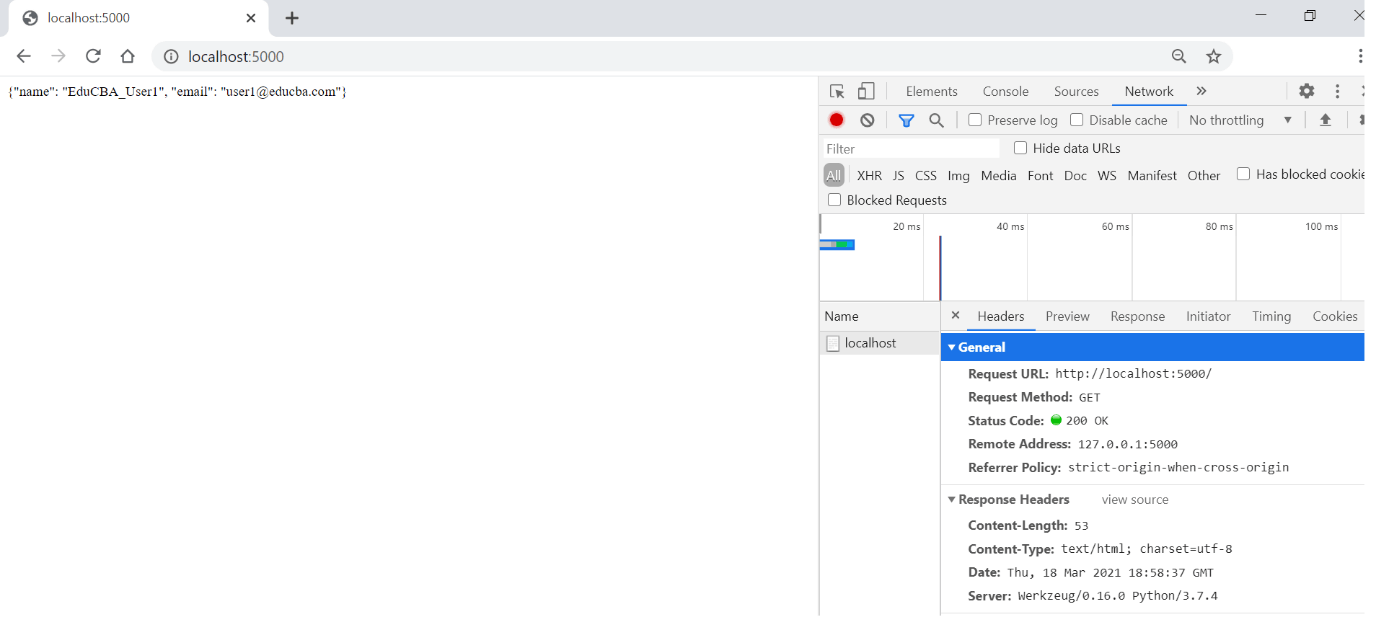

- FLASK APP BUILDER VISUALIZE DATA FROM DIFFERENT DATABASE HOW TO
- FLASK APP BUILDER VISUALIZE DATA FROM DIFFERENT DATABASE CODE
Here, i edit most of the fields on the page. Let's click on the first row's edit link: Now when we run the empty search from earlier you should see this: if we pass in a bad id, then a message will be shown to the user. if the user presses theīutton on this page, then it will save the entry to the database and flash a message to the user to that effect. however this time we pass it the album object so the form gets pre-filled with data so we have something to edit. if we find the id, then we can create our form using the same form we created earlier. next, we do a database search for the id in question. The first item to take note of here is that we have a custom route set up for the url that uses the id we pass to it to create a unique url. when you save this new html file, make sure you save it to the of course, this html file doesn't exist yet, so that will be the next thing we need to create. Valheim Genshin Impact Minecraft Pokimane Halo Infinite Call of Duty: Warzone Path of Exile Hollow Knight: Silksong Escape from Tarkov Watch Dogs. then we create an instance of our new form and pass it to our access flask app from another computer giving a flask application on a local network a url make flask listen on 0.0.0. My Flask App requires me to match a lot of data with some values in a dictionary. Here we add an import to import our new form at the top and then we create a new function called Return render_template('new_album.html', form=form) Return render_template('results.html', methods=) Return render_template('index.html', search_results(search): This defines all the fields we need to create a newĪnd add a function to handle what happens when we want to create the new album.įrom forms import musicsearchform, albumformįrom flask import flash, render_template, request, redirectįrom models import methods=) Media_type = selectfield('media', choices=media_types) As you can see, we are subclassing from GenericModel and use. Release_date = stringfield('release date') Your own generic data source must subclass from GenericSession and implement at least the. open up theįile we created in the last tutorial and add the following class: Let's start by coding up our new album form. Different methods of data retrieval from specified URL are defined in this protocol.
FLASK APP BUILDER VISUALIZE DATA FROM DIFFERENT DATABASE HOW TO
in this tutorial, we will learn how to actually add data, display search results, and edit entries in the database. The HTTP protocol is the foundation of data communication on the world wide web. of course, we still haven't added any data to our database, so the search form doesn't actually do much of anything except tell us that it didn't find anything. So, you need to hand-edit the view., we learned how to add a search form to our music database application. The problem is that when 2 tables (pages) refer to each other, this is not possible. That's why you will see "table already generated" messages, as shown above. So, ApiLogicServer sorts the view classes so that referenced classes are first. Recall that Python is a 1 pass compiler - you can't make references to things that aren't defined.

With DBeaver you are able to manipulate with your data like in a regular spreadsheet, create analytical reports based on records from different data storages, export information in an appropriate format.
FLASK APP BUILDER VISUALIZE DATA FROM DIFFERENT DATABASE CODE
Note the related_views makes class references in the code snippet above. DBeaver is a universal database management tool for everyone who needs to work with data in a professional way. You can hand-edit these pages to make further customizations, including advanced functionality such as charts. This file will have code for setting up the database and your Flask routes: nano app.py This file will connect to an SQLite database called database.db, and have a class called Student that represents your database students table for storing student information, in addition to your Flask routes. * etc Edit views.py - display options (e.g., charts) Open a file called app.py in your flaskapp directory. * Joins are created for "id" columns (e.g., show Product Names, not Product IDs) * Control this with the ApiLogicServer CLI -favorites option In order to create good-looking pages, these are not simply column lists, e.g.:

These are tedious to code, so they are created by ApiLogicServer. # table already generated per recursion: Track # FAILS TO COMPILEĮmployeeModelView, "Employee List", icon="fa-folder-open-o", category="Menu") This file is going to contain php code that will fetch data from the score table and display it in JSON. Create a new file data.php inside the chartjs folder. Create data.php file to fetch data from MySQL table. This will contain all the javascript code that we are going to write for this project.

Show_columns = Įdit_columns = Īdd_columns = And create an app.js file inside the js folder. Important: Activate Logic after Create AdminĮdit views.py - display options (e.g., charts)


 0 kommentar(er)
0 kommentar(er)
